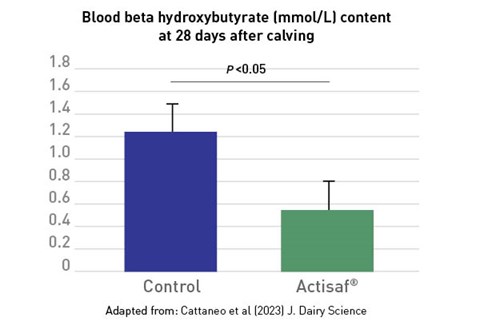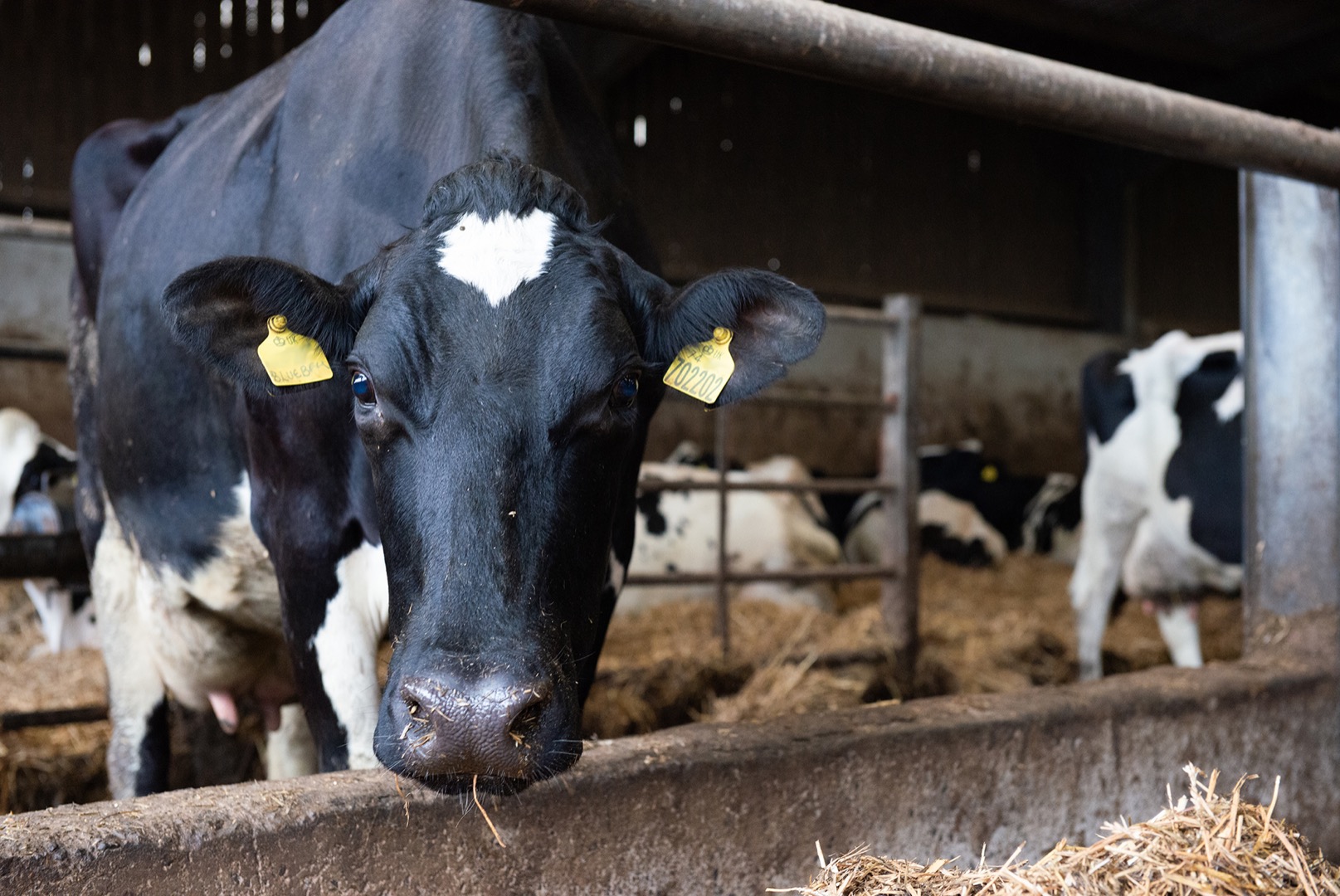The transition period presents an extreme challenge for cows, with increasing demands of late pregnancy, calving and the beginning of lactation. Nutrient requirements increase during this time while dry matter intake is reduced, leading to body weight loss through negative energy balance.
The cow’s immune system is also challenged, which typically elicits a non-specific systemic inflammatory response, requiring energy the cow is already lacking during this time. Ultimately, this increases the risk of metabolic disorders and problems like reduced milk yield, mastitis and poor fertility, which impacts your bottom line.
Cows that suffer during the transition period will yield less during lactation and have more difficulty coming into calf, which can ultimately lead to culling.
After calving, the cow is still being set up for a successful lactation. The challenges of closing the energy gap, returning to oestrus and getting back in-calf within a target of 83 days in-milk and hitting peak milk yield all have a critical effect on performance over the whole lactation, as well as into next year’s cycle.
The rumen is key
An efficient rumen and microbiome are critical at this time to extract as much as possible from the diet, and research proves Actisaf® live yeast can help. Nutrient and energy needs increase dramatically as intakes drop, so the animal must be supported through careful nutrition and management to ensure success in meeting key milestones.
Kevin Doyle, technical manager at Phileo UK and Ireland, says: “A period of negative energy balance in the first few weeks of lactation is normal, however it is vital the diet is managed to close this energy gap as fast as possible to avoid issues with metabolic disorders and resulting poor fertility.
“Maximising dry matter intake during this period with energy-dense, balanced diets and managed feed access is key. A glucogenic-based diet, supplemented with the correct balance of protein, trace elements, antioxidants and minerals, is essential to maximise milk yields, minimise body condition loss and facilitate a good immune response.
“Recent peer-reviewed trial work has shown cows supplemented with 10g/day of Actisaf® have significantly improved blood ketone profiles, indicating a lower risk of sub clinical ketosis. These cows also experience lower levels of inflammation, signifying a more tempered immune response. By optimising rumen conditions and stabilising the microbiome, Actisaf® reduces negative energy balance, decreases inflammation levels and, subsequently, maintains good immune function in early lactation.

“However, not all yeasts are equal. As a result of our unique strain and stability, Actisaf® consistently helps improve animal performance, providing a better return on investment.”
Manage inflammation
The major risks during transition come from clinical and sub-clinical ketosis due to excessive or prolonged energy deficit, which can have long-lasting effects into lactation. Clinical ketosis occurs in only around 2% of cows in the UK, however sub-clinical ketosis, which is largely invisible, is present in around 30%.
An immune response is a natural part of early lactation to deal with pathogens in the uterus and udder and help involution of the uterus. Inflammation is normal during an immune response, but is normally a short, sharp response to resolve infections quickly. Prolonged immune responses require glucose and other nutrients (up to 2kg of glucose per day in recent studies), diverting precious energy away from milk production and fertility.
It is therefore important to minimise the energy gap and keep inflammation to a minimum to prevent other impacts:
- x2 chance of being culled in the first 60 days
- x8 risk of DA
- x6 increased risk of cystic ovaries
- x5 risk of retained placenta
- x3 risk of uterine infection
- x4 risk of metritis
- 40% lower chance of successful conception during the first 150 days in milk and 22 days longer to first oestrus
- 1,000 litres less milk yield
How does Actisaf® help?
Supplementing dairy cows with Actisaf® live yeast promotes optimum rumen function – keeping the engine of the cow running smoothly.
“Actisaf® supports the growth of key microbial species which digest fibre, and other key species such as Megasphaera elsdenii which produces propionic acid, an energy-dense glucose precursor. This species also utilises lactic acid, a fermentation by-product which negatively affects rumen pH if left to build up,” continues Kevin.
“In the transition period this leads to more of the right type of energy (propionate) to help the cow close the energy gap and lower inflammation. As we head into early lactation, recent research from the University of Nottingham has proven 2.8kg or 5.5% more energy corrected milk can be achieved from the same feed intake - further demonstrating we can get a lot more from every bite.
“By supporting this microbiome, Actisaf® has also been proven to ease the transition from one diet to another, lower the risk of acidosis, and help cows get more from every bite of their feed throughout lactation.”
During the transition period, feeding 10g/day of Actisaf® can:
- Increase conception rate by 22%
- Improve negative energy balance post-calving
- Lead to 2.8kg/day more energy corrected milk during early lactation
- Provide a smoother transition onto lactating diet
- Improve rumen function and optimise feed digestion
- Help rumen microbes adapt to diet change and reduce acidosis risk
- Reduce period of inflammation

